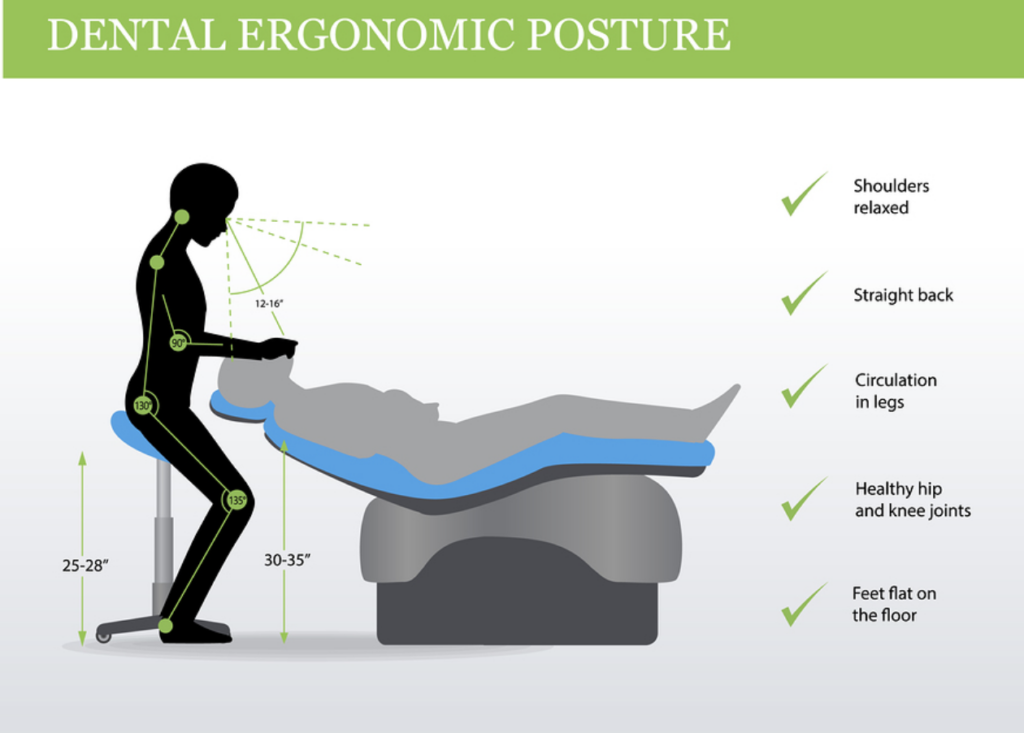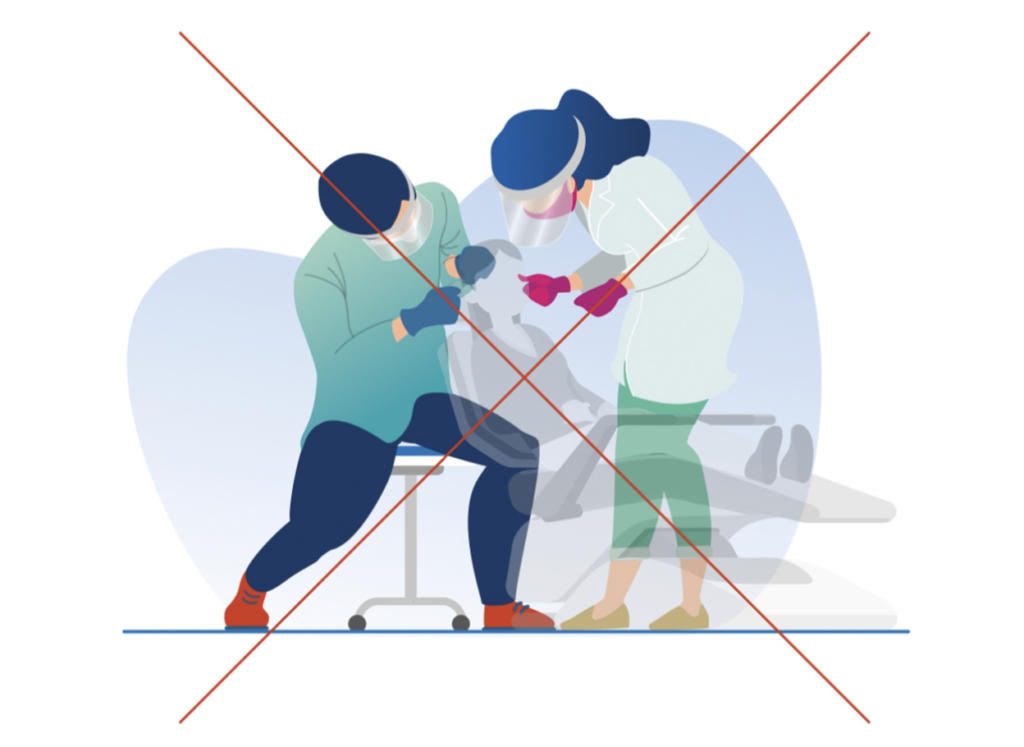Sitting, in general, is challenging for the body; our bodies simply weren’t designed to sit for long periods of time. We hear this message all of the time: sitting is the new smoking. as it has been linked to many health issues including neck and back pain, increased risk of obesity, cardiovascular disease, and diabetes. In this article, we’ll talk about dental ergonomic tips to upgrade your ergonomics.
Research from Cornell University Department of Ergonomics found that up to 90% more pressure is applied to your lower back when you sit versus when you stand. Back pain is one of America’s most common health problems, with 1 out of 4 people experiencing back pain 1 day every 3 months, according to the National Institute of Arthritis and Musculoskeletal and Skin Disease.
As dental professionals, we have an increased risk of pain. In fact, studies show that up to 96% of dental professionals experience pain throughout their careers. While that may be a shockingly high statistic, I believe there are things we can do as dental professionals to overcome this. For starters, we need more education, tools, and resources around practitioner health, ergonomics, and stress management. I hope to be a part of bridging the gap. Let’s start with some simple tips on Ergonomics.
( Instagram )
1. Dental Ergonomics 101: Set Yourself Up for Success
When I say set yourself up for success, I mean by making sure the space around you is set up to support your body. According to OSHA, Ergonomics is defined as “the science of adapting workstations, tools, equipment and job techniques to be compatible with human anatomy and physiology to reduce the risk of musculoskeletal disorder injuries due to ergonomic stressors.”
For dental professionals, this means fitting your job to your body. Whether you’re in the same operatory and office every day or you switch offices regularly, ensure your room is set up uniquely for you at the start of each day. Check to make sure the following things are in the correct position for you to maintain proper posture and ergonomics while you work.
The patient’s chair. Do you have enough space to swivel around the patient as needed or does it need to be moved or adjusted? Are there any pre-set buttons on the patient chair that can adjust quickly for you?
Your chair. Make sure your chair is set up to support your body. If you have a chair you prefer, make sure you have it with you every day you practice.
Equipment: the handpieces, tray table, and instruments. Are they all in a good position so that you avoid twisting, turning, leaning, reaching or rounding while you’re working? Adjust these accordingly.
Computer/Chart: If possible, adjust the computer, keyboard, and mouse so you can review the chart, period probe, and whatever else needs to be done without putting your body into contortionist positions. If you have paper charts, find a good spot to put them to support you.
2. Find and Maintain Neutral Posture Positioning

This one is extremely important and flows beautifully from the last tip. Neutral body posture is a position that supports the natural curves of the spine and keeps your body in good alignment; it is a position of ease for that body that can be maintained for a long period of time.
An important thing to note about neutral posture is that once achieved, the body can sustain it with minimal effort. In this position, there is less stress on the musculoskeletal system which gives your body an advantage to do your work with more ease.
Below is a list of adjustments you can make to find a neutral posture for yourself:
Feet (even) on the floor
Hips slightly higher than the knees (hips height will vary depending on your operator chair)
Low back (lumbar spine) supported
Head/ neck/ shoulders/ elbows/ hips aligned
Shoulders relaxed
Elbows bent at 100° or more
Wrists straight
Fingers slightly curled and relaxed
The more we stray out of neutral posture for the day, the more concerning it can become. Dropping out of neutral posture here and there is less concerning, but if you’re doing it over and over again throughout the day, it’s likely creating some sort of adverse effect on your body.
I understand that there aren’t always adjustments that can be made depending on the office, but just try your best! There are some ideas and options to look into if you cannot achieve a neutral posture while you’re working. If you can’t see properly, try to adjust the patient and practitioner chair. Another option is ergonomic loupes (I love Lumadent) to help you see better.
If you’re looking for more individualized support around your ergonomics, check out The Aligned Hygienist Program. The Aligned Hygienist is my signature 12-week group coaching program for hygienists who are ready to feel their best while learning tools to improve posture, ergonomics, self-care, and stress levels.
3. Proper Positioning: Sequencing for You

Now that your room is set up and you have a basic understanding of proper positioning, the next step is to set your patient chair up appropriately for each procedure and area of the mouth. Remember, we want to keep the body in neutral posture, or as close as we can, while we work.
For hygienists, the patient chair will change depending on which arch you’re working on. I won’t go into too much detail about the exact measurements we look for, but it’s crucial to understand where we want the patient to be so we can maintain a neutral posture.
Everybody is different. Your body is different than the practitioner across the office, so your positioning and your patients positioning may be varied. In addition, each patient’s body is different so you may make slight adjustments for each patient. Your number one goal is to keep your body in alignment, so your body doesn’t work as hard and there is less strain being placed on the musculoskeletal system.
If you’re looking for more tips on Ergonomics, check out my upcoming webinar on August 31st.
Dental Ergonomics Isn’t Always Easy, But It’s Always Worth It
You’re worth it and your body deserves it. Even though it can take a bit more time and energy to learn, restructure, and implement better ergonomics, in the long run, it’s worth it. If you want to maintain a long-lasting career in dentistry, you need to put yourself first.


